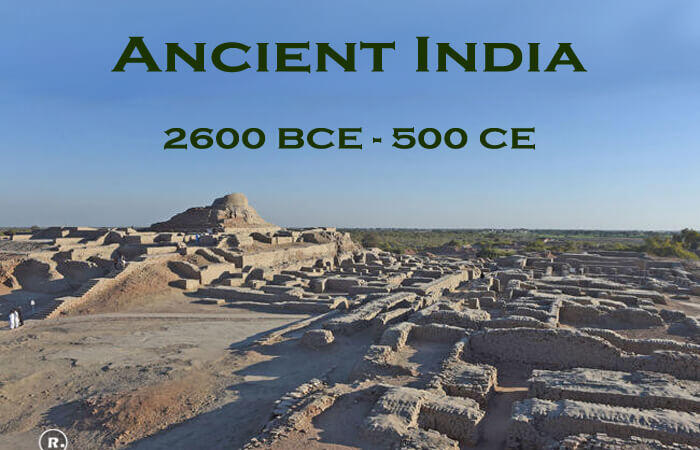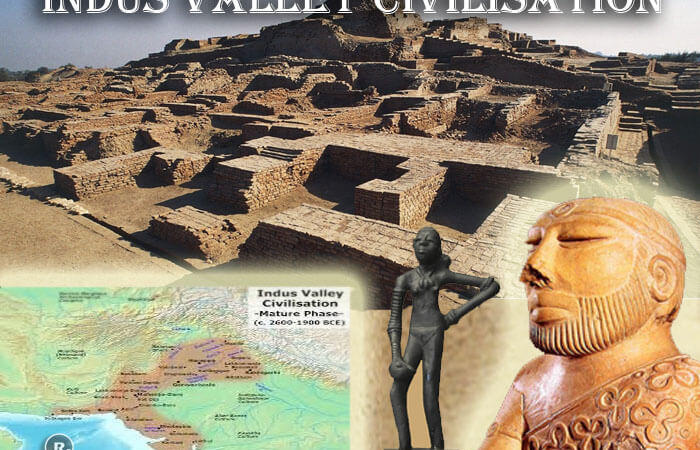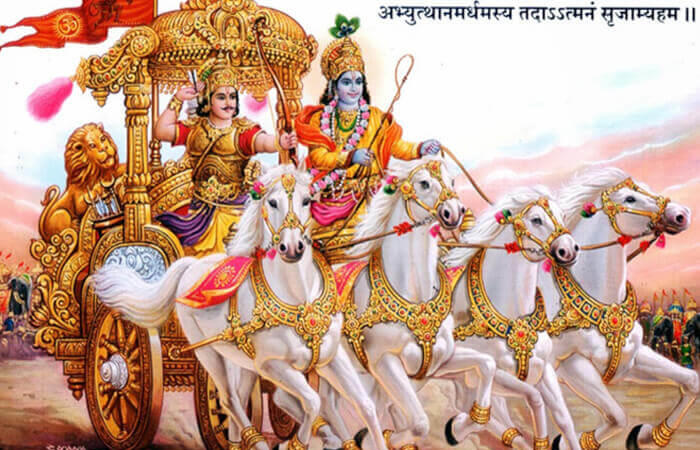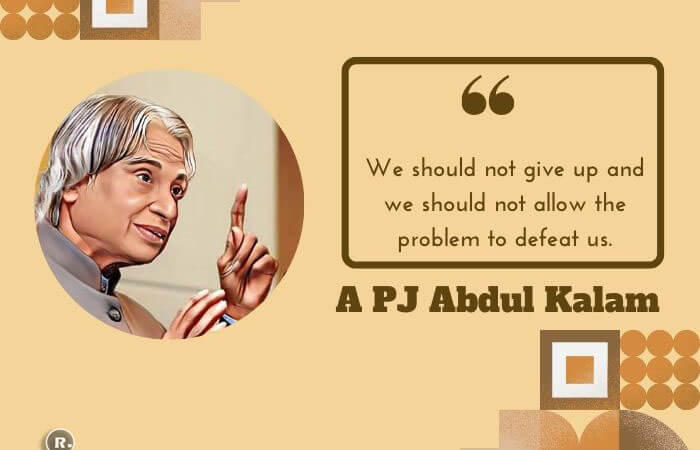Brief Story Of India
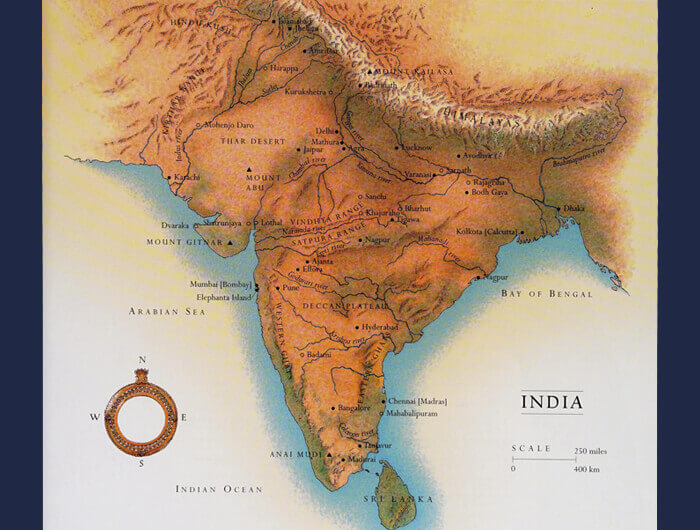
The Indian subcontinent’s first major civilization arose in about 2600 BCE along the Indus River in what is now Pakistan. The two great cities of Harappa and Mohenjo Daro were home to some 30,000 people supported by agriculture. Each city had a citadel, communal granaries, and streets of houses laid out in a grid pattern. There were elegantly engineered water supplies with covered brick sewers for waste, and builders used a fired brick that enabled them to repel floodwaters from the mighty Indus.
The Harappan people traded with Mesopotamia and Egypt, and their artisans worked in copper, bronze, ivory, and wood. They were the first culture known to have made cotton cloth. The Indus culture thrived for more than 600 years but began to decline between 2000 and 1750 BCE. It was a result of rising sea levels and the silting up of rivers, which would have damaged trade.
The connection between the culture of the Indus and the subsequent civilization that appears to have arisen by the middle of the second millennium BCE farther east in the Indo-Gangetic plains is unclear. Archaeological evidence unearthed from the Indus Valley sites indicates a flourishing culture that produced an abundance of material goods and artifacts. By contrast, all that is known of the later civilization is from the oral texts the Vedas that are its greatest expression. There is evidence from these texts of the use of war chariots and iron weapons, a reverence for the cow, and a pantheon of nature deities.
The people of the Vedas, often called the Aryans, lived in clans under the rule of a warrior chief. Priests performed a yajna (sacrifice) to honor the gods, ensure prosperity, and validate the chieftain’s rule, and a system of social delineation was observed. The Aryans gradually turned from cattle herding to wheat farming and established the first Indian political entities. which combined dominant forms of kingship with republican participation by elites, monarchies, however, gradually came to prevail.
Another urban civilization developed along the river Ganges in the period 700 to 500 BCE. In the 5th century BCE the kings of Magadha, based at Rajagriha in the northeast, established themselves as the dominant power in the area. Wealthy trading towns at Kashi (modern Varanasi), Ayodhya, and Shravasti had all the trappings of an urban economy, including coins, private property, guilds, banks, and a common script known as Brahmi. The relative prosperity of these kingdoms facilitated the pursuit of philosophical ideas, while trade networks enabled the transmission of intellectual, commercial, and other cultural influences across North India.
The most important political aspect of this period appears to have been a contest between the Kshatriya class (warriors) and the previously preeminent Brahmins (priests) over the significance of the latter’s controlling knowledge of the sacred rituals. While this tension was usually resolved by creating an elaborate balance between the temporal power of the warrior-king and the ritual authority of the priest, some Kshatriya denied altogether the authority of the Brahmins over spiritual life.
Foremost in this challenge were Siddartha Gautama, or the Buddha (“Enlightened One”), and Vardhamana, or Mahavira (“Great Hero”), the founder of Buddhism and the teacher of Jainism respectively. At this time, Buddhism and Jainism assumed equal importance. Buddhism was, however, eventually to have the greater impact in Asia, although its influence was largely limited to northeast India until the 3rd century BCE when the first comprehensive Indian empire-builder Ashoka Maurya, became an enthusiastic convert to the new religion. popularizing it and spreading its teaching far and wide.
The period after Ashoka’s death saw a revival of the power of the Brahmin religion. Devotional cults glorifying Shive and Vishnu became increasingly popular. In addition to the epic poems the Mahabharata and the Ramayana put a growing emphasis on the divinity of their heroes Krishna and Rama, who were adopted as incarnations of Vishnu. In various mythic compositions known collectively as the Puranas, Shiva, and Vishnu in their many forms came to be given coherent narratives.
Apart from the rule of the Buddhist Kushanas, who created an empire extending from modern Afghanistan to northwestern India, there were only short-lived and unstable kingdoms until the Gupta dynasty emerged to forge a new empire in northern India in the 4th century CE. The rule of Chandra Gupta I (r.320-335 CE) and his successors was a period of religious tolerance in which the key tenets of Hindu practices emerged.
South India was relatively isolated from the North, apart from a brief incursion by Samudra Gupta I. By the 1st century, there is literary evidence of a culturally advanced, yet politically unsophisticated geographically area dominated by Tamil, the oldest Dravidian language, quite distinct from the Indo-European Sanskrit and its successors found elsewhere. Several overlapping peoples – the Pandya, Chera, and Chola – appear to have coexisted, each styling their traditional land as a kingdom.
Incursions by Huns from Mongolia helped to end Gupta rule. In the South, the Pallava, then the Rashtrakuta, and finally the Chola dynasties dominated between the 6th and 10th centuries, sometimes using naval power to extend their influence to Southeast Asia and conquering swathes of North India. In this period, the religious, Sanskritic culture of the North influenced the South, creating a composite culture in which Shiva and Vishnu were adopted as southern deities, the language of Telugu and Kannada developed out of a combination of Tamil and Sanskrit, and traditional southern temples took on classical northern layouts.
Traders brought Islam peacefully to South India in its early years, but in 711 CE, Arab forces led by Muhammad ibn Qasim conquered Sind (a region of modern-day Pakistan across the border from Rajasthan), and local peoples were converted to Islam. This province of the caliphate remained isolated until the early 11th century when the Afgan ruler Mahmus of Ghazni invaded India in the name of Islam. His campaign laid the foundations for the success of others, and in 1193, a formidable army of Ghur caliphs conquered Delhi and began a period of Muslim ascendancy known as the Delhi Sultanate.
Muhammad of Ghur’s successor, Qutb ud-Din Aibak, erected a great tower, 240 feet (73m) in height, to celebrate the triumph of Islam in India. The Sultanate reached its peak under Ala ud-Din Khilji in the early 14th century, extending far into and devastating the South before incursions by the Mongols forced the sultans to turn back northward. Despite this consolidation, in 1398, Delhi was sacked, and the Sultanate was reduced to one of several competing Muslim powers in northern India.
Suggested Read: History of India
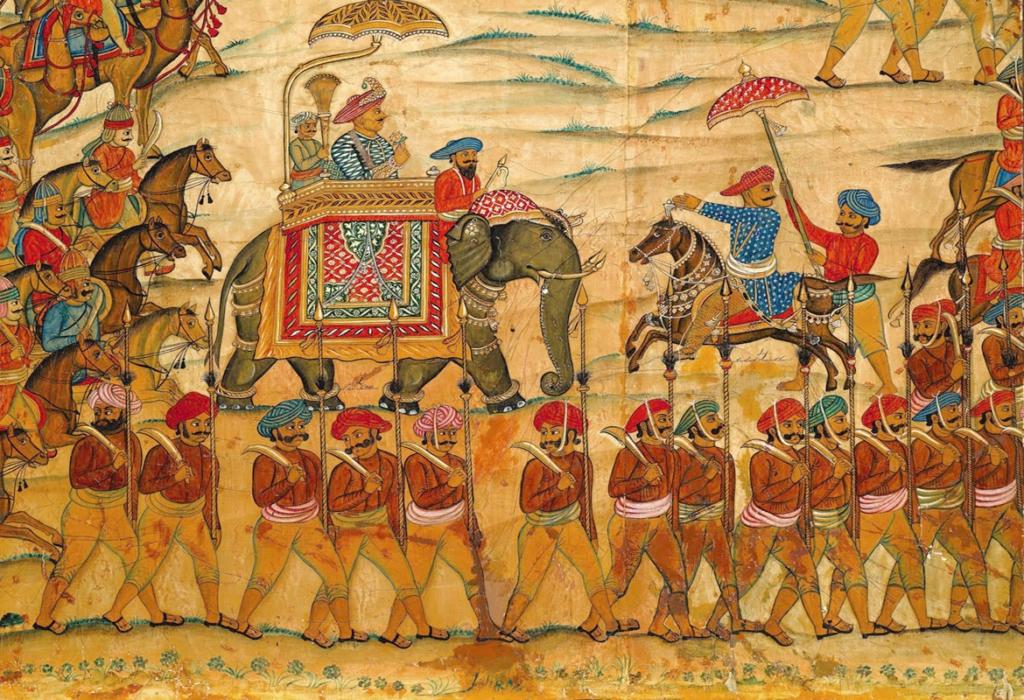
This period saw the establishment in the South of the last great Hindu kingdom, Vijayanagar (1336-1565), whose rulers sought the both establish continuity with the traditional southern Hindu dynasties and to innovate a public culture that accepted the novel presence of Islam within a Hindu framework. With the collapse of Vijaynagar, the southern Muslim sultanate of Bahmini came to dominate the region, until gradually much of the South also came under the sway of the Mughals.
Between the 12th and 17th centuries, an influential form of public spirituality emerged across India that was centered on emotional devotionalism (bhakti) toward a personalized deity. It drew on older traditions and assimilated Islamic characterization of God into Hindu discourse.
The next dynastic shift in India’s fortunes occurred in 1526 when the Afgan leader Babur captured Delhi and founded the Mughal Empire. Under the rule of Akbar (r. 1556-1605), India enjoyed one of its most successful and enlightened periods. Both his son, Jahangir, and his grandson, Shah Jahan, presided over an age of relative stability. Jhangir’s killing of Guru Arjun was decisive in the creation of Sikhism as a separate religion. Shah Jahan was no less ruthless in his consolidation of power. although he was tolerant of Hinduism once his position was secure.
The rule of Shah Jahan’s son Aurangzeb (r. 1658-1707), who destroyed Hindu temples and forcibly converted many non-Muslims, mark the decline of the empire at its geographical height. Numerous rebellions were ruthlessly suppressed. The Martha people, under Shivaji (who lived 1627-1680), attempted to provide a self-consciously Hindu challenge to Aurangzeb.
After Aurangzeb, the Mughals became weakened by endemic factionalism and Delhi was eventually sacked in 1739 by the Persian Nadir Shah. But just as a new generation of indigenous powers began to emerge, India was to enter a new and decisive phase of its history, this time dominated by the growing involvement of European trading powers, notable the Dutch, French, and British, the last of whom would seize control of much of this ancient land and unify it into the Raj.
Suggested Read: A Concise History Of India

